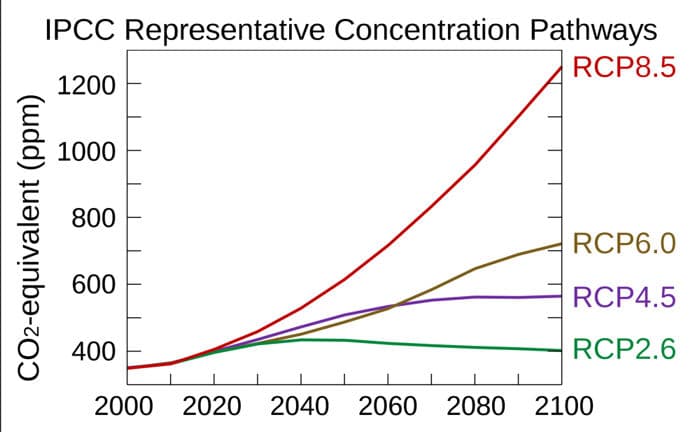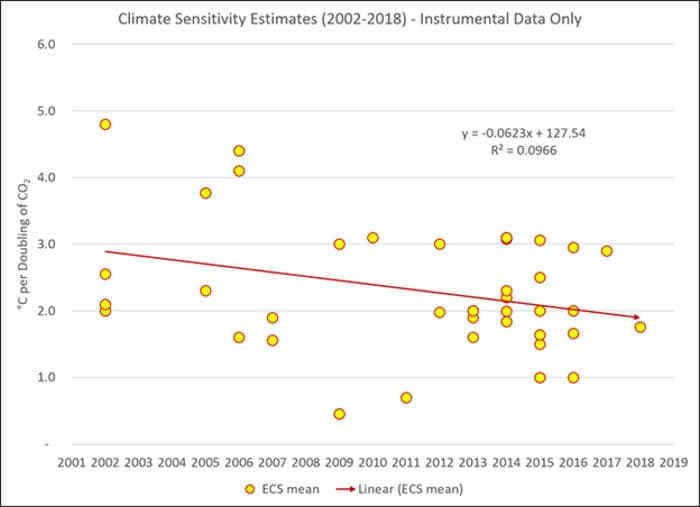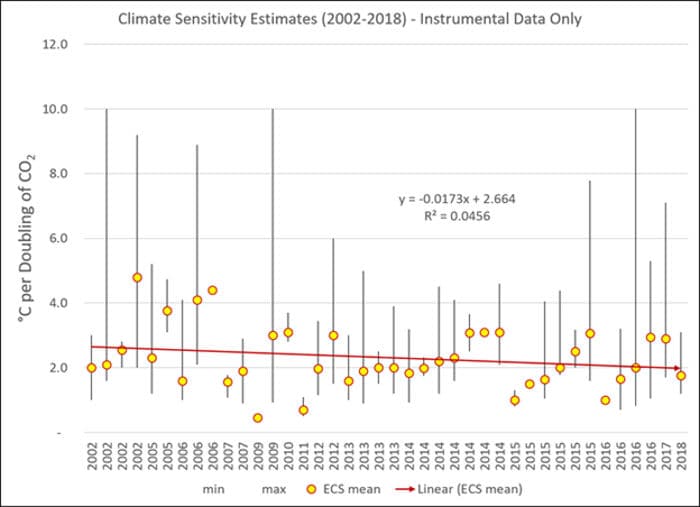The consensed climate science community has consensed on the hypothesis that anthropogenic CO2 emissions are largely or totally responsible for the recent increase in global average surface temperature. Some even refer to CO2 as the climate “control knob”. The climate alarmist community and numerous progressive politicians perceive the recent increase in global average surface temperature as an “existential crisis”, which they assert would ultimately leave the earth uninhabitable.
The ensemble of climate models project widely varying increases in global average surface temperature, almost all of which have been higher than the observed global average surface temperature. If one accepts the hypothesis that increasing atmospheric CO2 concentrations are responsible for recent warming, while there are numerous factors which contribute to the variations in the model projections, the two most influential factors would be the future CO2 concentration and the sensitivity of the climate to increasing CO2 concentrations.
Future atmospheric CO2 concentrations are a function of both anthropogenic and natural CO2 emissions and are unknowable. The consensed climate science community deals with this issue by using a set of four Representative Concentration Pathways (RCP2.6, RCP4.5, RCP6 and RCP8.5) which project atmospheric CO2 concentrations into the future.

Much of the concern regarding an “existential crisis” is driven by studies based on RCP8.5, though many climate scientists now believe this concentration pathway is unreasonable or even unachievable based on resource constraints.
The sensitivity of the climate to increasing atmospheric CO2 concentrations is currently unknown. The IPCC uses a range of 1.5 – 4.5°C per doubling (nominally to 540ppmv). A recent analysis by David Middleton of climate sensitivity estimates based on instrumental data from 40 studies conducted since 2002 concludes that the estimates of climate sensitivity resulting from these studies are declining over time, as shown in his graph below. Note that the values range from a low of 0.5 to a high of 4.8, or 2.65+/-2.15.

The graph above displays the mean values established in the various studies. The graph below shows the range of high and low estimates for most of the mean values displayed.

While most of the studies displayed identify significant uncertainty, the uncertainty in numerous studies is enormous, such as the second 2009 study displayed above. This study has a mean of 3 with uncertainty of -2 and +7.
Clearly, if CO2 is the “climate control knob”, our knowledge regarding climate sensitivity to CO2 concentration hardly qualifies as “settled science”. However, as shown in the graphs above, recent instrumental studies suggest an equilibrium climate sensitivity toward the low end of the IPCC range of estimates. Such a relatively low sensitivity suggests that climate change, as it has been occurring over the past ~70 years, does not represent an “existential crisis” now, nor is it expected to represent such a crisis in another ~70 years when the doubling of the atmospheric concentration of CO2 would be expected to occur.
Efforts to accurately determine climate sensitivity, climate forcings and feedbacks are climate science. Proclamations of an “existential crisis” are political science, intended to obfuscate rather than advance climate science.



